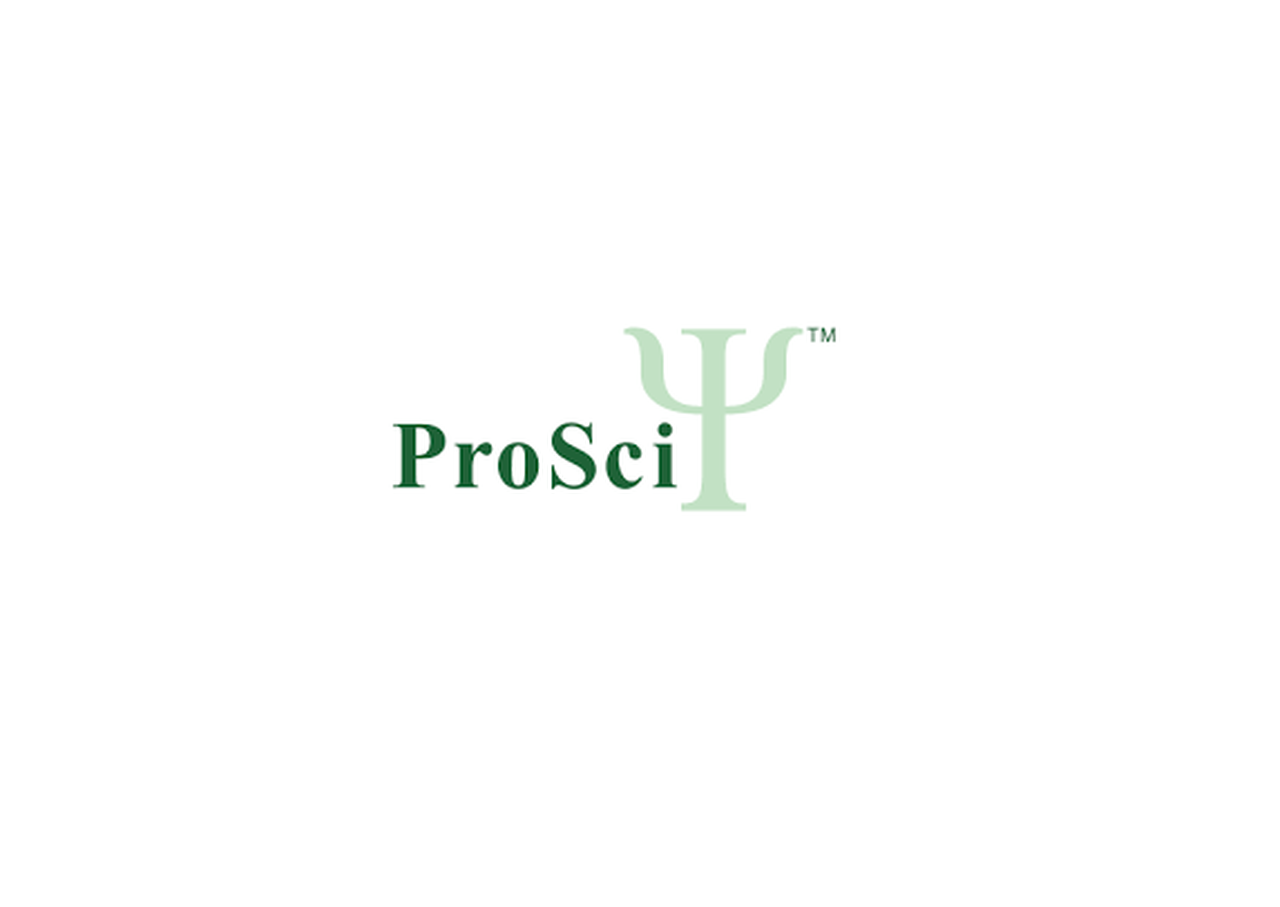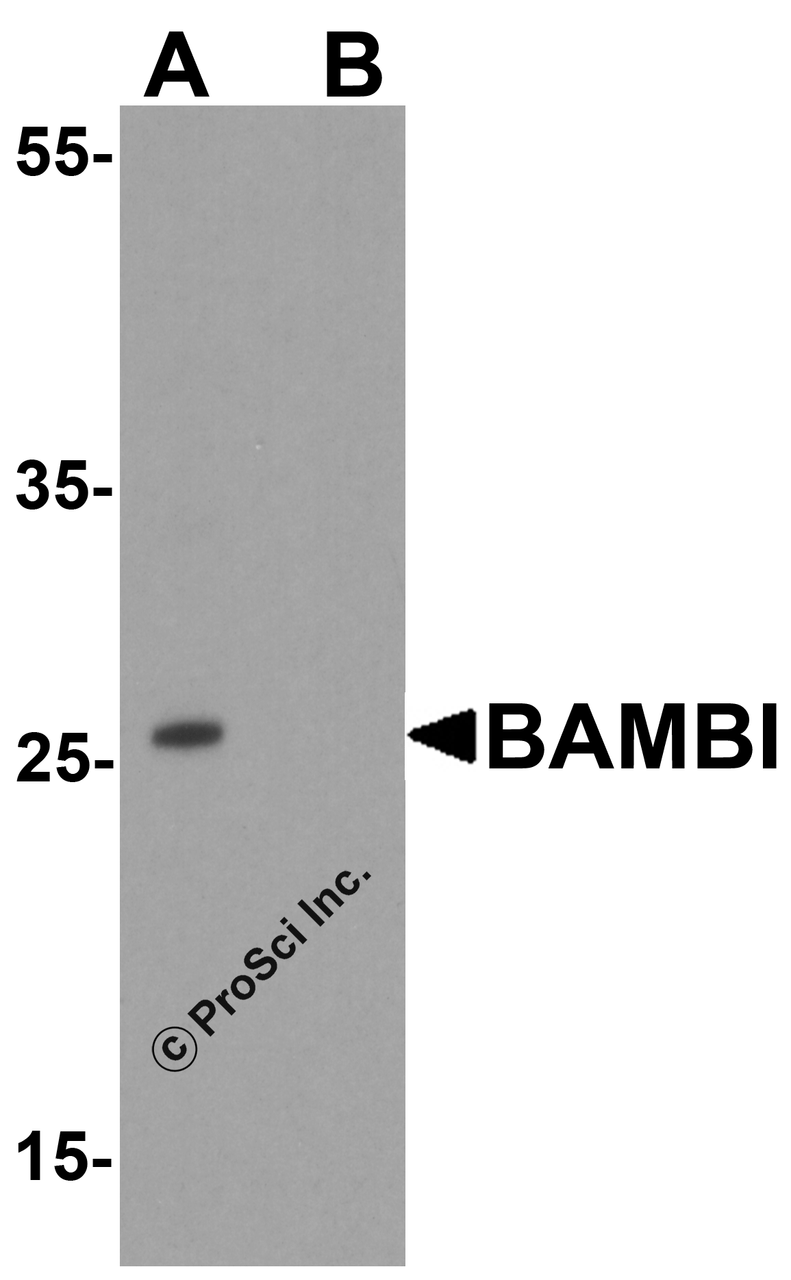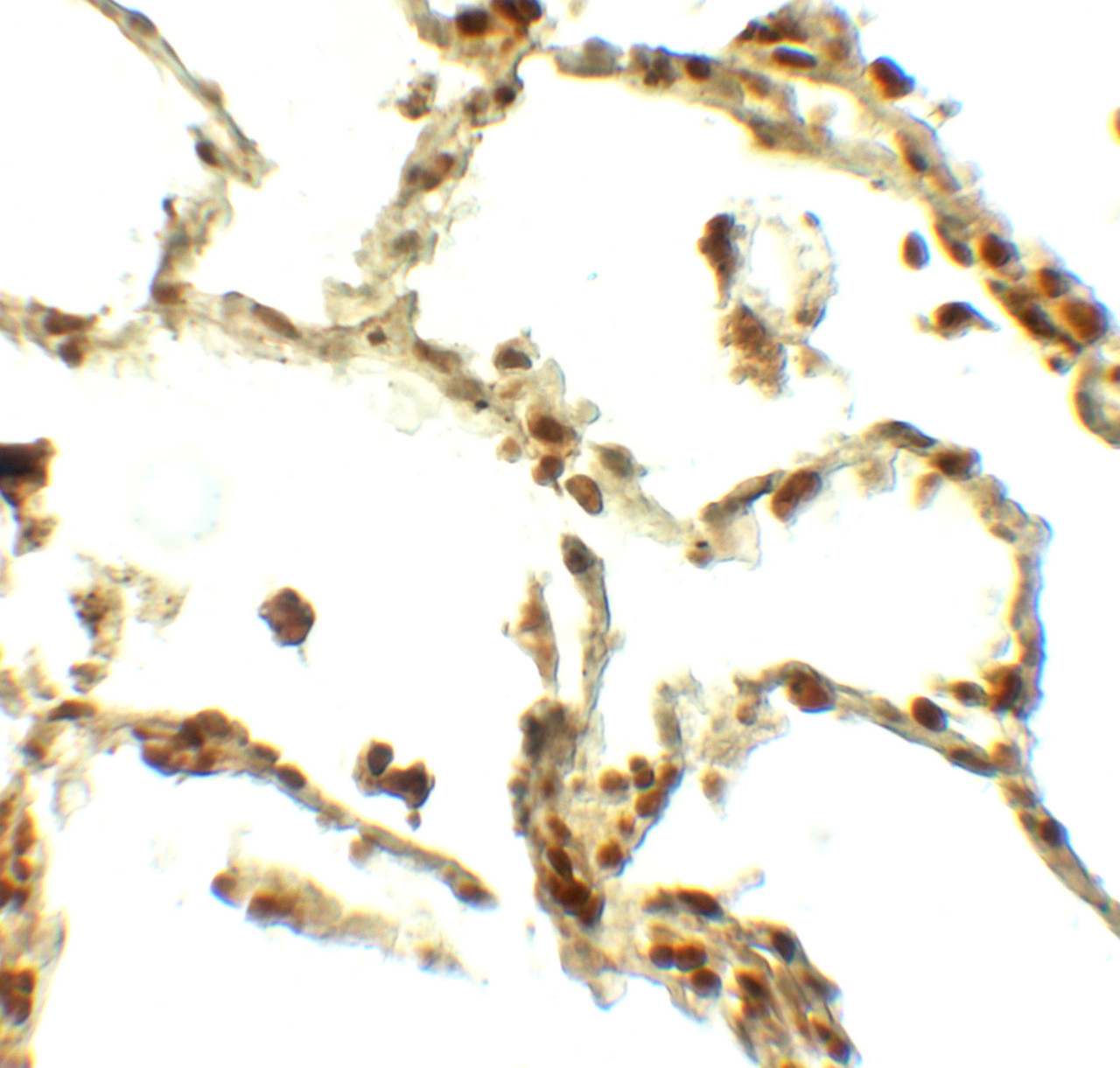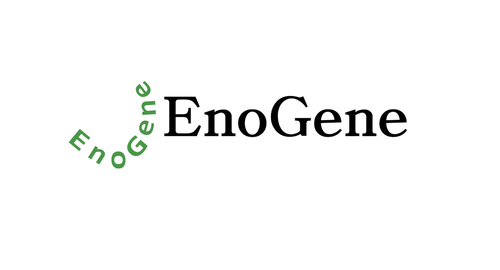Product Description
BAMBI Antibody | 7931 | ProSci
Host: Rabbit
Reactivity: Human, Mouse, Rat
Homology: Predicted species reactivity based on immunogen sequence: Sheep: (88%)
Immunogen: BAMBI antibody was raised against a 17 amino acid peptide near the center of human BAMBI.
The immunogen is located within amino acids 100 - 150 of BAMBI.
Research Area: Signal Transduction, Stem Cell
Tested Application: E, WB, IHC-P, IF
Application: BAMBI antibody can be used for detection of BAMBI by Western blot at 1 - 2 μg/ml. Antibody can also be used for Immunohistochemistry starting at 5 μg/mL. For immunofluorescence start at 20 μg/mL.
Antibody validated: Western Blot in mouse samples; Immunohistochemistry in human samples and Immunofluorescence in human samples. All other applications and species not yet tested.
Specificiy: BAMBI antibody is human, mouse and rat reactive.
Positive Control 1: Cat. No. 1402 - Mouse Lung Tissue Lysate
Positive Control 2: Cat. No. 10-101 - Human Lung Tissue Slide
Positive Control 3: N/A
Positive Control 4: N/A
Positive Control 5: N/A
Positive Control 6: N/A
Molecular Weight: Predicted: 29 kDa
Observed: 26 kDa
Validation: N/A
Isoform: N/A
Purification: BAMBI antibody is affinity chromatography purified via peptide column.
Clonality: Polyclonal
Clone: N/A
Isotype: IgG
Conjugate: Unconjugated
Physical State: Liquid
Buffer: BAMBI antibody is supplied in PBS containing 0.02% sodium azide.
Concentration: 1 mg/mL
Storage Condition: BAMBI antibody can be stored at 4˚C for three months and -20˚C, stable for up to one year.
Alternate Name: BMP and activin membrane-bound inhibitor homolog
User Note: Optimal dilutions for each application to be determined by the researcher.
BACKGROUND: BAMBI (BMP and activin membrane-bound inhibitor homolog, NMA) is a membrane spanning glycoprotein that acts as a negative regulator of TGF-beta signaling during development (1) . BAMBI transcription regulation is under the influence of beta-catenin, BMP, smad3 and smad4 (2, 3) . BAMBI expression can increase in colorectal and hepatocellular carcinomas relative to non-cancerous tissues (4) . BAMBI is expressed at high levels during odontogenesis. BAMBI is coexpressed with Bmp-4 during early Xenopus embryogenesis and can be detected in poorly metastatic human melanoma cell lines (5) .
 Euro
Euro
 USD
USD
 British Pound
British Pound
 NULL
NULL












